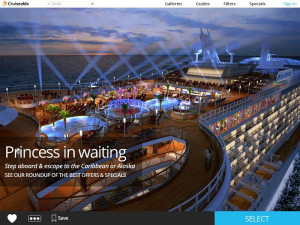 Guest Post by J.D. Lasica
Guest Post by J.D. Lasica
Regular WUL readers know that Shonali (a friend and former colleague at Socialmedia.biz) showcases guest posts about how to build, engage and sustain an online community, among other things. Lots of case studies and lots of stories of success and failure.
Today I’m here not with a success story, but with a quick back story and a set of assumptions. And I’m hoping you can tell us if our strategy makes sense or if it sucks (don’t hold back!), so that others might gain insights for their own community efforts.
First, the back story.
We just launched our travel tech start-up, Cruiseable, three weeks ago after a year of work. Our team’s goal is to help bring social, mobile and digital to the cruise world – a huge, sprawling, largely analog $38 billion market.
For me this is as much a cause as it is a business play. I love to cruise, but it’s frustrating that there’s no site or app to help me discover the wide assortment of cruises that are a good match for my travel style and budget – and to help me book the right voyage to the right destinations.
I know that my peers in the digital generations don’t want to traipse down to a storefront to spend an hour with a travel agent. We’re “Generation Do-It-Ourselves” and today’s online solutions are just a painful gauntlet of confusing drop-down menus.
So our ragtag army of cruise bloggers, travel writers, technologists and travel professionals teamed together to reverse-engineer the cruise discovery, planning and booking experience.
Here are the working assumptions we’re beginning with for our website and mobile app. Feel free to challenge, push back and knock ”˜em down!
Assumption 1: Create content
A year ago we set out to build a travel company and cruise discovery engine, but along the way Cruiseable turned into a travel and cruise publication as well. Surprise! Instead of launching the site and hiring marketers to do content marketing, we brought on bloggers and writers who helped us create a rich foundation of smart, informative travel guides, cruise reviews, consumer how-to articles and Visual Lists, a new content format we’re pioneering.
Assumption 2: Build a platform
Our roots are in Silicon Valley, so we knew we didn’t want to just create or license expert content. We wanted to give cruisers the tools to tell their own stories and share their experiences through text and media. People trust recommendations from peers and strangers over established experts.
So we spent months creating an entirely new CMS (content management system) from scratch – WordPress didn’t have the firepower. Users can write a review, create a story, share a discovery, upload a photo and include any of our 10,000-plus destination and ship photos in their write-up. Nobody else lets users do that.
Assumption 3: Give people the right decision tools
I suspect a lot of WUL readers are like me: We’d rather arrive at our own decision rather than have a travel expert tell us which ship to sail on. So our team created a set of “Bliss Filters” – sliders that let users fine-tune the kind of experience they’re looking for, whether it’s a romantic getaway, a family reunion, a fine dining experience or a cultural adventure. See for yourself – play with them at the top right of any page on Cruiseable.
Assumption 4: Don’t be overly salesy
Most travel ecommerce sites are old school with big toll-free numbers plastered everywhere and butt-ugly web pages crammed with banner ads and deals-deals-deals.
We hired a world-class design firm to create a simple, elegant UX (user experience), borrowing the Google ethos of less is more and the Apple aesthetic of restraint and simplicity.
All along the way, we kept asking ourselves, “What can we take out?”
Calls to action are subdued. If you want to contact us, just click or tap the “Book It” button. We replaced the cruise lines’ over-the-top marketing come-ons with helpful, informed consumer journalism. We’re not an online sales brochure, we’re a resource to help people make informed decisions.
Assumption 5: People respond to big, beautiful images
Society is becoming more and more visual, so we’ve been focusing on highlighting big, beautiful images. We have more than 10,000 high-quality photos – spectacular shots of polar bears, aurora borealis, coral reefs, ancient ruins – that we’ve curated and optimized.
Like Pinterest, we hope to attract users through an emotional visual appeal.
We think people will create bucket lists and wish lists of stunning destinations, regardless of whether they’re planning to take a cruise any time soon.
Assumption 6: If we build it, they won’t come
My years in social marketing tell me that, yes, we need to infuse our content with SEO goodness, with keywords and structured data and optimized metadata.
But if we just build it, people won’t come in droves.
So our small marketing team is now working to grow our user base and nurture our new community. Our go-to-market plan consists of a Cruise Ambassadors program, influencer outreach, word of mouth through Facebook, Pinterest and Twitter, targeted campaigns, email marketing, growth hacking and guest blogging – like this post.
What do you think – are we on the right track? Out of our minds? What tools are we missing? Know anyone in the travel space we should be collaborating with? Let loose in the comments and thanks for sharing your wisdom!
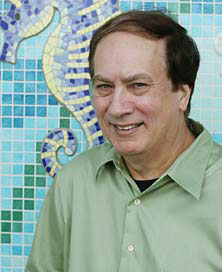
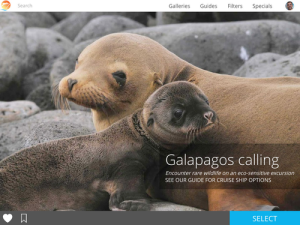
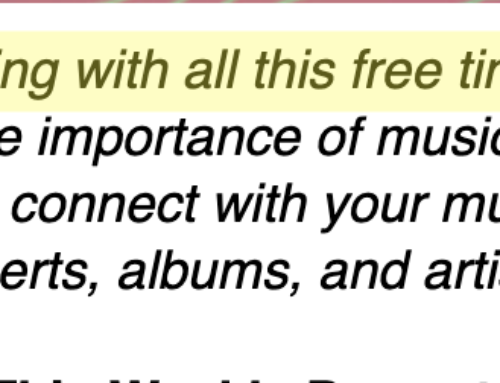
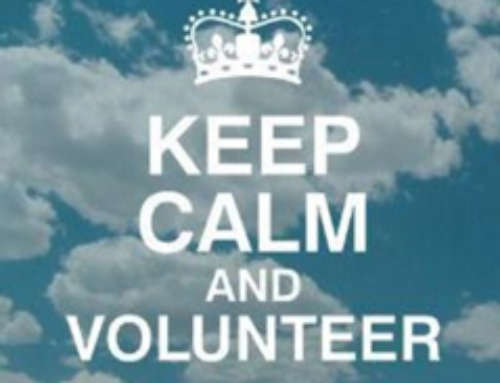



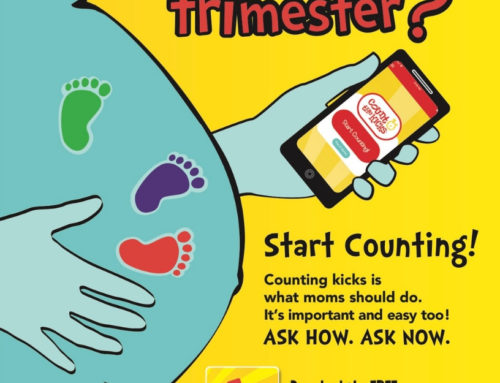

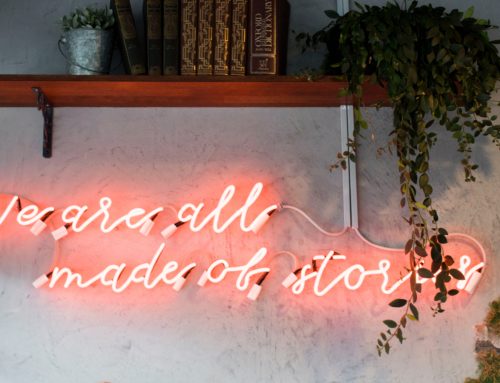

@shonali brokeblokeblogs MartinaMcGowan jdlasica cruiseable thank you .
http://sangotunhien.biz/
brokeblokeblogs MartinaMcGowan TYVM for sharing jdlasica #WUL post on cruiseable – do share with your cruise-loving friends!
jdlasica Well, Davina aka 3HatsComm has already stopped by… ;) see above!
3HatsComm I’m so glad you were patient enough to stop by a second time, Davina – thank you!
my comment was really long, and really gobbled up. grrr…
I liked the ‘bliss’ filter – it’s what I do when I curate experiences for others (I’m a go to for F&F on that kind of thing). Laughed when I got trips I’d never afford. I’m not the target demo, so it’s hard to say. My biggest thoughts as a PR and a cruiser – a website won’t make people like cruising; a great cruise experience will.
And the other, my dislike of crowdsourcing bias towards the Ambassadors. I’ve been a TripAdvisor for a while, b/c I benefit from the other reviews, the community. (That typed, TA has asked and I’ve thought YES there should be greater rewards.. hard to do w/ such an extensive community.) Links for a non travel blogger, ‘discounts’ on ‘sales’ off of brochure rates no one ever pays.. not for me. IDK seems like your PR, marketing, content, SEO, SM .. that’s a ton of real work from the community, for the site to reap all the benefit. FWIW.
It’s very very interesting. My comments are based more as a cruiser than a communications consultant, though that’s sure to come into play here as I skip around. Hope this helps FWIW:
Platform: that I don’t know if that was necessary as a start-up, to invest that kind of $ right out of the gate. It’s a pretty site to be sure, a lot of functionality, some cool features and yet.. {this is the PR in me, the true business communicator at work here} .. a website isn’t going to make people like cruising – a good cruise experience will.
Pictures and SEO – that’s true; you need more than both to attract customers, esp. those you want. (Disclosure: I am not your target demo.) Sales – not everyone likes the hard sell and yet, end of the day ‘logic’ isn’t always the deciding factor in what separates a person’s money from their wallet.
Content – It plays into SEO as well as being a trusted resource I know I can turn to as I look for info. I’ll touch on it more later, the content plays a big factor when planning. Ex. plenty of sites cover WDW, but a select few do well enough that they’ve become must visits b/c they offer practical, current, better info you can’t easily find elsewhere. Speaking of.. navigation might need some streamlining; I had to click back and forth, new tabs popped up as I looked into Travel Guide info for Aruba and Curacao .. going in 2 weeks. :-)!
Decision tools – THIS. I’m one of those people go to for ideas and opinions, this is what I do when I talk to people. What you call Bliss Filters, that’s what I’ve always thought would help people plan a vacation, it’s that ‘curated’ experience that makes most of the wish list. BTW I did it.. and came up with FABULOUS looking trips I couldn’t dream of affording. ;-)
Now back to the ‘build and let them find us’ part of the plan. If a website can act as a go-to and be a true resource of value, then sure.. most people will book thru you and let you get your cut, that’s the biz model. I’m just not one of them, I’m a DIY and know that’s the best way for me to get the best deal.
My biggest nit to pick is the Ambassador program. As I’m sure you already know, there are extensive communities out there, the helpful content and friendly forums free the Googling. Why would I leave them? I’m a TripAdvisor and yet, don’t expect much ‘reward’ for my contribution (though it wouldn’t hurt!) b/c I find that site helpful, useful. From reading and forgive me if I’m overthinking it, it’s like the Ambassadors are going to do a lot of the real work (the content, build the trust, the relationships, WOM, etc.) of the site .. and the biz will reap the reward. A discount off the ‘no one ever pays the brochure rate’ price or advance of a deal that I could find anywhere else doesn’t blow up my skirt. The link back to your site only helps someone in the travel biz, a travel blogger selling ads against clicks and eyeballs. IDK think it’s the consultant in me bristling at the ‘crowdsourcing’ concept (see also: why I don’t post my content on another site for free in exchange for ‘link’ and ‘exposure.)
Hi JD great site. I agree on the big images. It is why Houzz has beaten Pinterest for people in the homebuilding and remodeling industry (customers and vendors). It is so much more visually stunning.
You did a great job with the visuals.
Granted my sample size was only 4 cruises 2 pacific and 2 africa once I clicked a cruise option the photos stopped. Would be nice when clicking a port on the itinerary map that photos from the port showing it off as well as pics from that cruise ship. Eventually some video even better if you can get the cruises to send you something. But maybe you can organize the photos you have by linking them with locales so when I click a port I am taken to it.
So tell me about the cruiseclout rating. A lot of folks including me were right in poopooing Klout. Why would I want to contribute and get my rating up. I like the idea of the community helping you with more visual content as they take cruises and report on them on the site. But often scoring is based on volume….an elite yelper is because they have reviewed so many places vs the quality of their authority….same with Klout tweet 80 times a day vs the average user who does 4 you get a higher score. Wouldn’t a heavy weight travel critic deserve a high cruiseclout score? Meaning one review/post from the editor of National Geographic Traveler would be viewed as uber to Howie even if I wrote 30 and got positive engagement. Or is cruiseclout something else?
Never been on a cruise. They sound fun. Surprised some of the cruises are so cheap! I mean value oriented 8)
Good luck!
Hi Shonali, thanks so much for the kudos. It’s all about building up a core group of cruise enthusiasts, one at a time, at this early stage. We’re still learning and I’m sure we’re making mistakes, so eager to hear where we’re screwing up!
Ya, I’ve taken cruises to the Caribbean, Mediterranean & South Pacific, though most of them were a while ago (ironic that I’ve been too busy working on this site/app to actually enjoy what we’re writing about!).
I don’t know @jodiechakowitz @3hatscomm Jodie & Davina, but would love to connect with them! :~)
JD, I love love LOVE the site, and how you’ve approached it. Wow! And the Ambassador approach – right on (as you know).
Btw – I had no idea you were a cruise enthusiast. Did you know that jodiechakowitz just went on one? Also, I know 3hatscomm has taken quite a few… I’d love to know what they think.
Who are you already collaborating with? Just in case I have any other ideas…